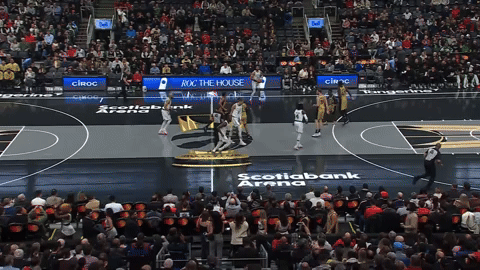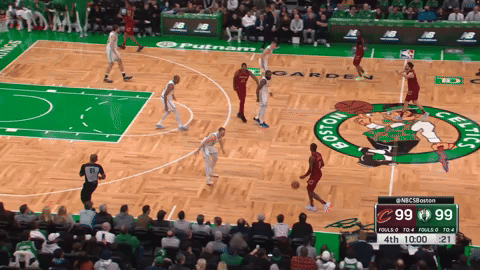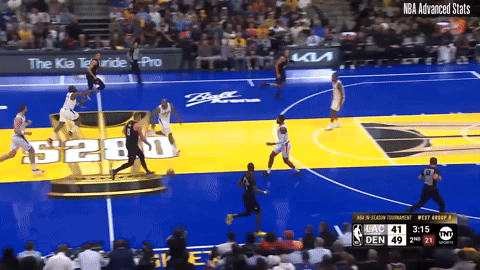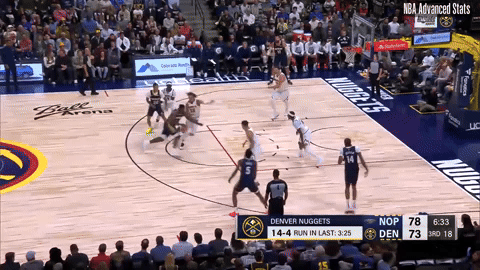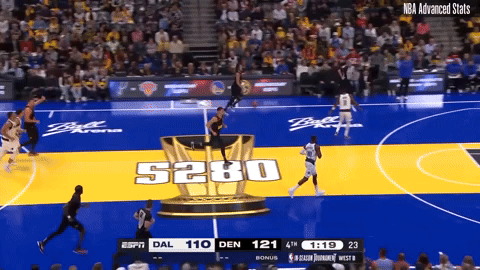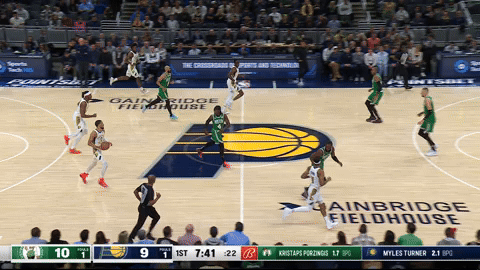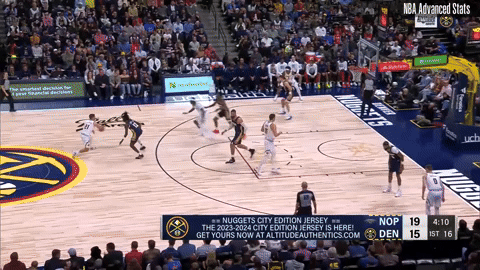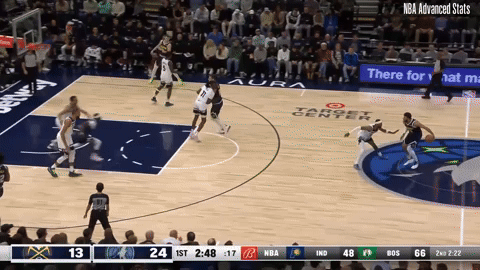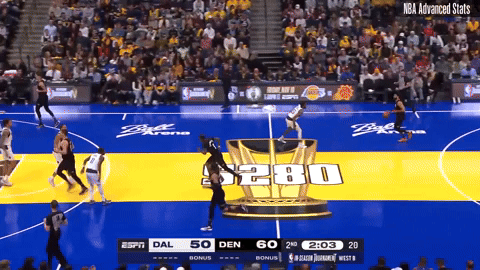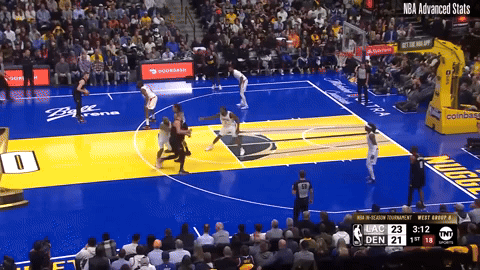A clash of (potential) champions
A scouting report on the Denver Nuggets ahead of their game against the Celtics.
It’s a big one tonight, folks. The Boston Celtics vs. the Denver Nuggets. Boston is on the road. Denver has a 24-6 record at home this season. Boston has a 19-10 record when traveling. Tonight, we see a potential NBA Finals preview. Hopefully, Jaylen Brown — currently listed as questionable — will be cleared to play, so we see both teams at full strength.
It’s worth remembering that one game in early March doesn’t dictate who will become an NBA champion. The Celtics could win by 40 or lose by 20; the result won’t change either team’s trajectory. It will change how some outside the fanbase view each team, though.
The Celtics are consistently labeled as pretenders—a team that has all the necessary talent but none of the toughness.
That narrative irks me.
It irks me that some feel the need to consistently question other people’s mental fortitude and toughness. It especially irks me when we’re questioning a group of professionals who have reached the pinnacle of their field.
We’re talking about 14 (there’s an open roster spot) of the 450 best basketball players in the world. Do we really think they got to where they are by being mentally weak?
I don’t buy it.
Yet here we are.
That’s the (external) pressure on the Celtics’ shoulders coming into this game. That same pressure has increased after Boston lost to the Nuggets by two points in their earlier meeting this season.
A two-point loss where both Jamal Murray and Nikola Jokic went full-on Super Sayain. It took Denver’s two best players to have an otherworldly night to beat a Celtics team where Jaylen Brown and Jayson Tatum were struggling from the floor.
It wasn’t a blowout. It wasn’t a mauling. No, it was a game full of elite basketball, with game plans being adjusted on the fly and two juggernauts sizing each other up.
I have a feeling we’ll see a continuation of that game when these two teams face each other later today. Still, I want to take a closer look at Denver. I want to see what’s making them tick. So, we’re going to break it down. First, we will look at the numbers. Then, we will look at the film. Let’s get started.
Denver: By the numbers
Mike Malone’s team is 10th in offensive rating and 9th in defensive rating, which puts them 7th in overall Net Rating. They’re a balanced team, and for me, offensive and defensive balance is key to post-season success.
You only have to look at teams like the Atlanta Hawks, consistently among the best offensive and worst defensive teams, to see how an imbalanced approach can derail a championship push. When you’re imbalanced, everything has to fall perfectly in the postseason, and that’s a rarity.
Offensive Shot location frequency
The Nuggets rank 27th in the league for threes attempted, with 32.4% of their offense coming from deep. Instead, the Nuggets look to attack the rim and pressure drop defenses by scoring in the mid-range. Cleaning The Glass has Denver ranked 9th for rim attempts, with 34.7% of their offense coming within four feet of the basket.
That leaves 32.9% of their offense coming from the mid-range area. Denver ranks third in the league for long mid-range attempts and 20th for short mid-range (the floater area.)
Offensive Shot location success rate
The Nuggets are 18th in the NBA for shot conversion around the rim, shooting 65.7%. They’re third in the league for mid-range success, dropping 46.9% of their looks. They also have a 45.1% success rate from long mid-range and a 47.9% success rate in the floater area.
Denver is also shooting a respectable 37.8% from deep, ranking them 12th in the league. They’re 9th for corner three success, hitting 37.5%.
Putting that into context
The Nuggets are a dangerous mid-range team; they take and make a lot of shots in the middle of the floor. Their three-point offense is based on making the right reads and taking high-quality looks. They don’t shoot as many perimeter jumpers as most teams in the league, which indicates they prefer process over volume.
Interestingly, the Nuggets like to pressure the rim but have had limited success there. This could cause them issues when facing a Celtics team that ranks third in the NBA for defensive field goal percentage within four feet of the basket, limiting teams to 62.4% shooting.
Defensive shot location frequency
The Nuggets do a great job of locking down the perimeter. They rank 3rd in limiting opposing teams' three-point shot frequency, allowing just 32.6% of their opponent’s offense to come from deep.
Of course, when there’s a significant focus on limiting the three-point shot, the defense has to allow attempts to come elsewhere on the floor. That’s likely why Denver is 20th in allowed shots around the rim, with teams using 34.6% of their offense within four feet of the Nuggets basket. And, 24th in defensive mid-range frequency, as teams look to punish Denver’s drop defense by taking 32.8% of their shots in the mid-range area — 23% of those middies are coming from floater range.
Defensive shot location success rate
They might deter perimeter shots, but the Nuggets struggle to impact the ones that are taken. They are middle-of-the-road in terms of defensive field goal percentage at the three-point line, with teams shooting 37.1% from the perimeter and 37% from the corners.
However, Denver’s system makes sense. They’re a stringent interior defensive team. They rank 6th in the league for rim defense, allowing just 64%. And they’re 3rd in the NBA for mid-range defense, holding teams to 40.9%.
Putting that into context
The Nuggets know who they are. They look to run teams off the three-point line and funnel them toward its lengthier defenders on the interior. That allows them to have a higher defensive impact on shot attempts, which in turn leads to more difficult shots for their opponents. It’s a well-thought-out system that clearly has the desired effect.
What does that mean for the Celtics?
We all know Joe Mazzulla likes his team to generate high-quality shot attempts on the perimeter. Given the Nuggets’ struggles in defending those shots and their success when defending the interior, it makes sense to continue with that game plan. However, the Nuggets are among the best defenses in funneling teams away from the three-point line.
The Celtics must stick to their game plan, control the tempo, and be willing to flow into secondary and tertiary actions to find the best shot available — regardless of where that attempt is coming from. If Mazzulla’s team runs some perimeter-based offense and finds success, they should spam those actions until the defense adjusts. Take their “Horns flare,” for example.
We’ve seen the Celtics spam this play when finding success. They often flow into multiple variations of this action to keep the defense guessing and consistently generate quality offense. You keep running this action until the defense figures out how to take it away.
Still, if the Celtics are struggling to generate quality looks from deep, the roster has enough slashing and post-scoring to overcome Denver’s interior defense.
On defense, the Celtics need to return to their no-middle principles.
Earlier in the season, Boston did a great job of putting wings near either elbow with a dropping big (or forward, depending on lineups) situated on or just below the nail. That allowed the Celtics to pinch in on drives as ball-handlers navigated over screens in PnR actions or received a pass while stampede-cutting toward the rim.
Limiting the Nuggets’ ability to get downhill will seriously hinder their mid-range and rim pressure. Boston’s defense has stifled interior-based teams all season. Other than where the wings are situated in terms of pick-up points, not much needs to be adjusted for this adjustment to pay dividends.
The Celtics Chronicle is a reader-supported publication. To receive new posts and support my work, consider becoming a free or paid subscriber.
It’s all about Jokic
When looking at the numbers above, you may be asking yourself how the Nuggets are such a consistent force in transition. After all, their best player is often the slowest guy on the court. So, how do the Nuggets generate such consistent offense? This happens in two ways. The first is allowing Jokic to “rip and run,” meaning he grabs the rebound and dictates play as a quintessential point-center.
The second is to have Jokic operating as a “trailer,” meaning he’s the last up the floor, thus allowing him to read the defense before flowing into action. A common outcome in this scenario is Jokic’s “stampede cutting” toward the rim, using his size and strength.
A significant swing factor in these plays is Jokic’s passing ability. Not only does a defense need to find ways of stopping him as he’s running the floor, but they also need to anticipate the pass and look to deny or clog the lane. Having Jokic operating in transition puts pressure on the defense to make smart reads, build out to the ball, and then rotate to get into their usual defensive system.
Boston has looked to nullify advantages caused in these scenario’s by “peel switching.” That allows them to quickly stifle advantages before rotating back into something resembling their normal coverage. Peel switches often occur in the half-court, but they can also be a valuable tool to limit an opponent’s effectiveness in transition.
If you’re not familiar with the peel-switching concept, The Athletic’s Mo Dakhil explained it in an exceptional article earlier this year.
Outside of transition, the Nuggets have a couple of pet plays they like to run for Jokic, and these are actions the Celtics should be wary of.
The first of these actions is a “Flex Gut.”
Sometimes, the Nuggets add an additional wrinkle, such as having Jokic loop over the gut screen.
Denver also likes to use Jokic as the second screener in Ram actions. Celtics fans should be familiar with this, as Mazzulla and Ime Udoka both like to implement this play.
Another action we can expect to see often is the Nuggets using Wedge screens to get Jokic off the perimeter and into the post. Denver consistently uses Jokic in delay actions so they can get the most out of his passing and ability to see over the defense. However, sometimes, Jokic is best served on the block. He can pass out of post-ups, has the size to back down his man, and boasts an array of post-scoring moves.
Beware the two-man game
Jokic and Murray were electric the last time they faced the Celtics. They may have been playing out of their minds, but their dominance wasn’t unexpected. When on the court together, they’re a dominant duo that often cooks teams from all three levels on offense.
According to PBP Stats, Jokic has assisted Murray on 118 buckets this season, amounting to 249 points. Murray has returned the favor on 83 occasions, leading to 196 points.
Sometimes, those assists are as simple as an easy post-entry pass to create a defensive collapse or take advantage of a mismatch. Other times, it can be something out of the PnR or hitting each other on the cut.
Either way, the Celtics will need to limit the impact Jokic and Murray can make when sharing the court together. Otherwise, they will be facing another night when their opponent's best two players are cooking, and there’s little chance of stopping them.
Rounding it out
The Nuggets are a difficult match-up for everybody. Their defense is designed to force teams out of their usual offensive approach. They set traps. They thrive on their opponents making mistakes. The Celtics will need to stay focused and execute their game plan rather than second-guessing their processes if shots don’t fall early.
Offensively, the Nuggets thrive against teams that leave space around the nail. They have enough mid-range scoring talent to consistently punish teams and have the size and athleticism to bully their way into the restricted area. At times this season, the Celtics have deployed a shallow drop, with the big man playing just below the level of the screen, allowing wings to pinch and guards to chase. I would expect to see that system deployed tonight.
I also expect Xavier Tillman to get the nod over Luke Kornet tonight. We saw how Grant Williams gave Jokic problems as an undersized big with enough strength to hold his own. Tillman can fill that role. He’s arguably more positionally aware the Williams, and can operate on the perimeter and block. I highly doubt Tillman will be a swing factor in terms of the result, but the matchup does project as suiting his skillset more than it does Kornet’s.
Whatever happens, the result doesn’t define the Celtics’ chances of raising a banner at the end of the season. Still, it would be nice to even the season series with Denver and bounce back from the loss to the Cleveland Cavaliers. I’ll be back here tomorrow regardless of the outcome. Until then, enjoy the game, and if you haven’t already, hit that subscribe button.


